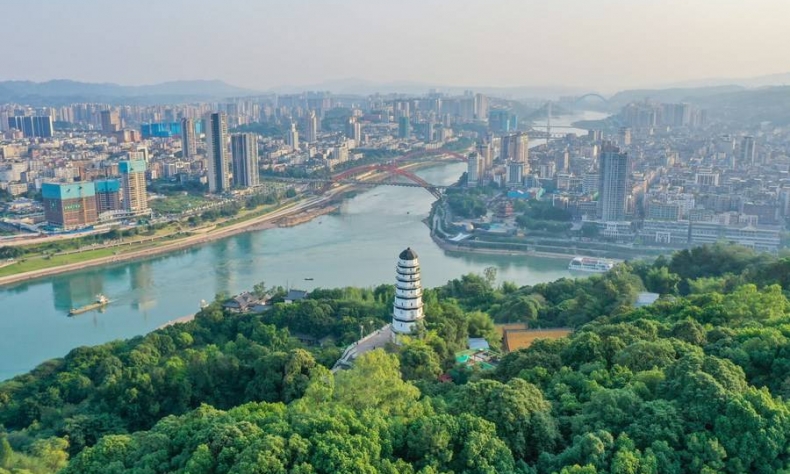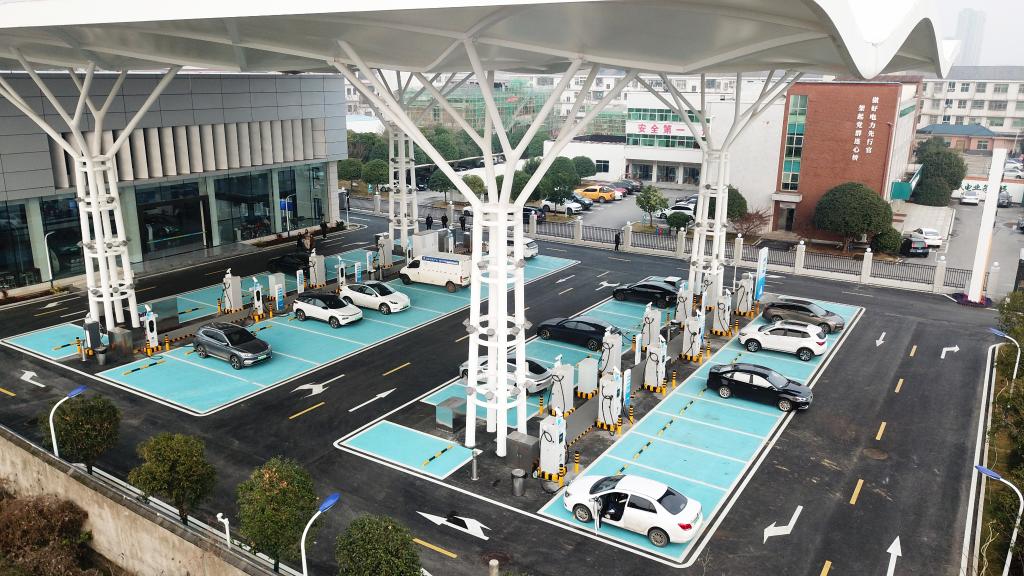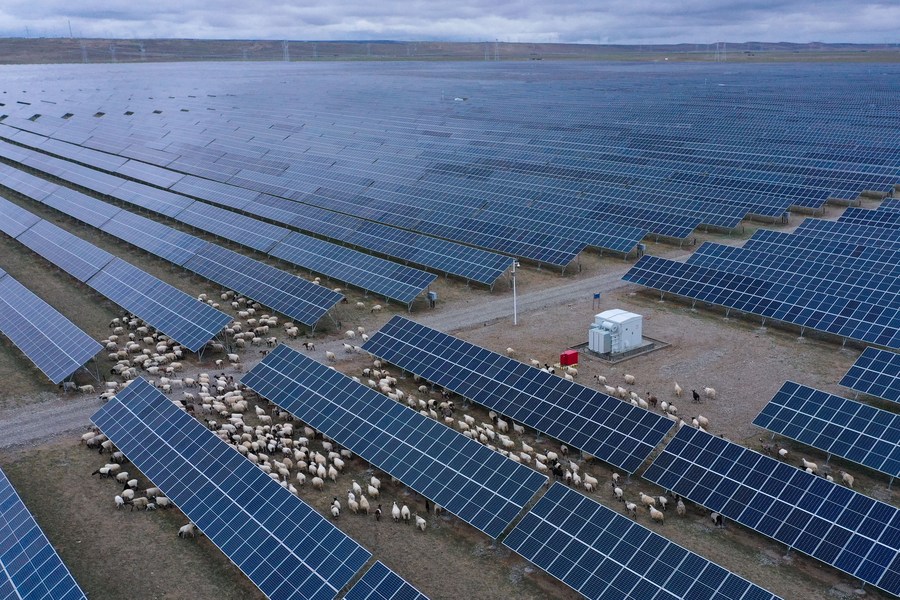Transition to Green, Low-Carbon Development

Regions across China are acting on the state’s call to shift to green development, with tangible progress made.
As climate change poses a growing threat to humanity, transitioning to a green, low-carbon economy has become the general global consensus. Thus far, 193 parties to the Paris Agreement have submitted Nationally Determined Contributions (NDC), and more than 150 countries have set objectives for net-zero emissions, carbon neutrality or climate neutrality. At the COP28 UN Climate Change Conference held in Dubai, United Arab Emirates, in November-December 2023, participants adopted the historic UAE Consensus, calling for transitioning away from fossil fuels to reach net zero. It signals the “beginning of the end” of the fossil fuel era.
China’s dual carbon goals
In September 2020, China set its sights on the dual targets of achieving peak carbon dioxide emissions by 2030 and carbon neutrality by 2060, which are known as the dual carbon goals. During the following years, it has established a policy framework for achieving them and mobilized government departments at all levels as well as the entirety of society toward achieving the goals.
As of October 1, 2023, all provincial-level regions in the Chinese mainland had formulated peak carbon action plans. The online database China Carbon Neutrality Tracker shows that these provincial regions unveiled 398 policies for the dual carbon goals in 2022 and 136 more in 2023. About one third of these regions kept their carbon emissions stable or even brought the volume down while expanding their economy, hence decoupling GDP growth from carbon emissions.
According to the Annual Report on Actions to Address Climate Change (2023), China’s 2023 green book of climate change, positive changes are also underway at the municipal level, especially in cities designated as pilots for low-carbon development. The transition in resource-dependent cities has drawn particular interest. In these cities, the main economic drivers are sectors related to the exploitation, processing, and sales of natural resources, especially resource-intensive industries such as petrochemical, mining, and heavy industries. With huge energy demands and high carbon dioxide emissions, these cities face extraordinary challenges in the transition to green development. China’s dual carbon goals and supportive policies to realize them have opened up new opportunities for these regions to blaze their own paths to carbon peak and carbon neutrality factoring in local conditions.

From resource-intensive to eco-friendly
In Baotou of Inner Mongolia Autonomous Region in north China, the economy has long been dominated by metallurgy, rare earth mining, and machinery manufacturing. China is now building it into the World Green Silicon City. In 2018, the first group of photovoltaic manufacturers entered Baotou, setting off a green trend in the city. Today, 12 major photovoltaic manufacturers are in operation there. The city’s production capacity for monocrystalline and polycrystalline – key materials for making solar panels – accounts for 40 percent of the nation’s total, and is expected to rise to 50 percent in China and 45 percent worldwide by 2025.
In the green production of crystalline silicon, green electricity plays an important role. Rich in wind and solar resources, Baotou boasts 25.4 million kW of exploitable wind power and 36 million kW of solar power. To tap this advantage, it is building four 500-kV new energy transmission routes. It is estimated that green electricity will power 40 percent or more of the local photovoltaic sector by 2025 and the share will expand to 50 percent by 2030. Baotou, formerly known as the grassland city of the iron and steel industry, is emerging as the World Green Silicon City.
Tangshan in Hebei Province was another northern city centered around the iron and steel industry, the production of which formerly accounted for half of the province’s total. After China announced the dual carbon goals, Tangshan launched a drive to convert this sector to high-end, green, and smart production. Meanwhile, it has stepped up the development of new energy with the focus on green electricity and green hydrogen. By the end of 2023, Tangshan’s installed capacity for wind and solar power had reached 3.24 million kW. Green transition is a boon not only to local economy but also the environment – its air quality has seen noticeable improvement.
Green opportunities
China’s green transition offers new opportunities for underdeveloped regions with abundant new energy sources. Talatan is a stretch of Gobi desert in Hainan Tibetan Autonomous Prefecture in Qing-hai Province, receiving little precipitation and devoid of tall vegetation. The flat terrain and long hours of uninterrupted sunshine make it ideal for solar power generation. Starting in 2011, the world’s largest photovoltaic industry park has gradually taken shape in this region. Today more than 7 million solar panels sprawl across 54 square kilometers, targeting a total installed capacity of 2.2 GW.

The industrial park has also delivered ecological benefits. It has taken several measures to control sand storms, and rehabilitate the local environment. Its solar panels shield the arid land from strong sunlight, hence reducing evaporation. Since its establishment, vegetation coverage in the park has expanded from 15 percent to 65 percent. To keep the bushes low so that they won’t affect the operation of solar panels, herders are invited to bring their herds of sheep to graze in the park. This leads to a triple win – for the energy industry, local residents, and the environment.
The soaring demand for green transition has spurred strong growth of China’s new energy sector. In developed eastern provinces, there is a larger pool of new energy technicians, and the sector is expanding rapidly. Changzhou of Jiangsu Province, for example, is a leader in the fields of solar power, lithium-ion batteries, new electric equipment, and new-energy vehicles. Both its output and sales of power batteries are the largest nationwide, making up half of the amounts of Jiangsu and one fifth of those of China.
Today, Changzhou is home to over 160 power battery producers and related companies, including four of the world’s top 10 power battery brands in terms of installed capacity. They are engaged in 31 pivotal sections of the power battery industry, including battery materials and technological research and development. This cements the city’s leading presence with 97 percent – the highest in China – of the battery industrial chain, ranging from power generation, energy storage and transmission to application. According to research by the Hurun Research Institute, Changzhou remained the top destination for investment in the new energy industry last year.
In China, the largest developing country in the world, different regions have varied levels of development and disparate resource endowments. Motivated by state policies, they are actively exploring paths to green development in light of local conditions. The joint efforts by both regional governments and businesses have delivered tangible results.
Chen Ying is deputy director and research fellow of the Research Center for Sustainable Development, Chinese Academy of Social Sciences.
 Facebook
Facebook
 Twitter
Twitter
 Linkedin
Linkedin
 Google +
Google +










